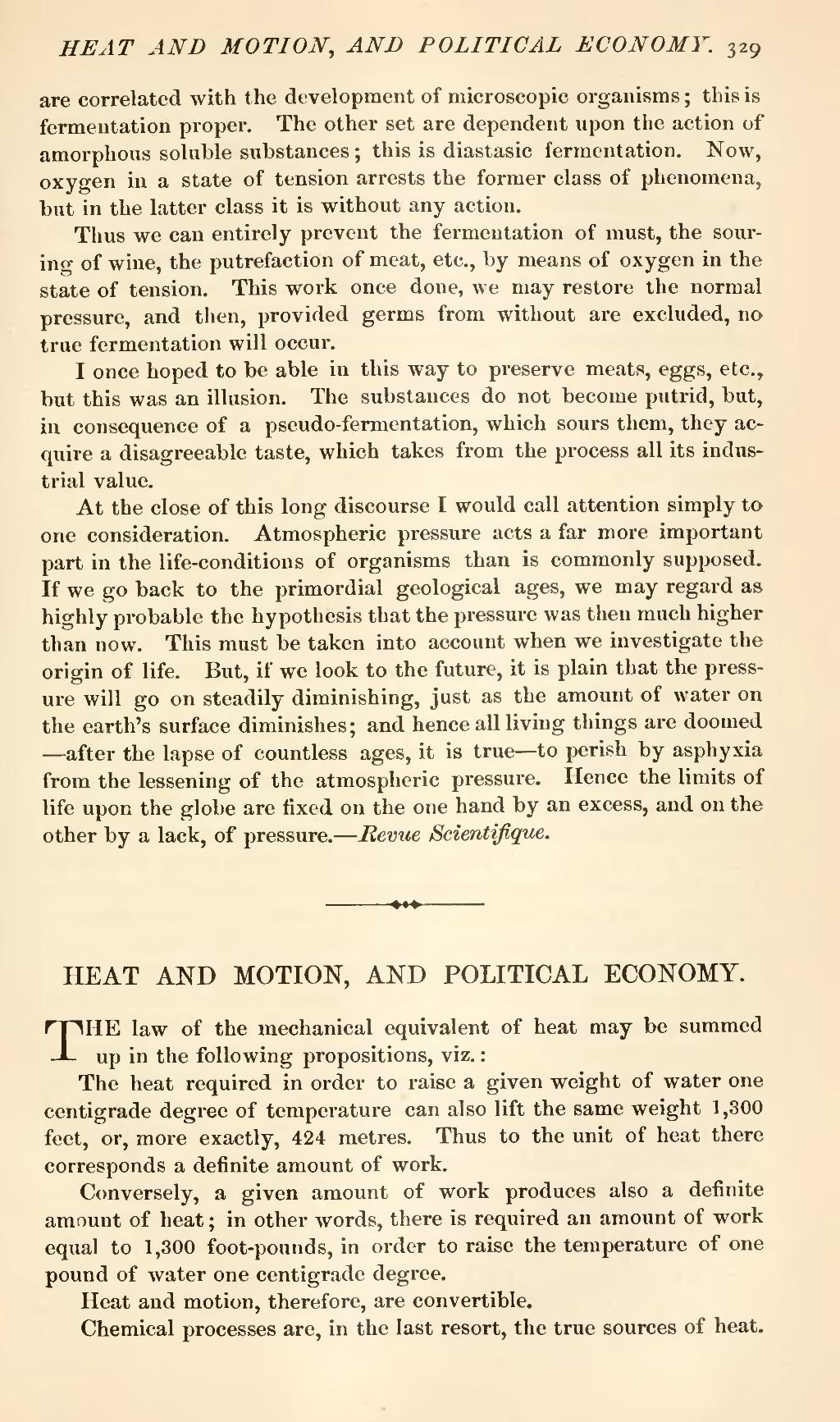are correlated with the development of microscopic organisms; this is fermentation proper. The other set are dependent upon the action of amorphous soluble substances; this is diastasic fermentation. Now, oxygen in a state of tension arrests the former class of phenomena, but in the latter class it is without any action.
Thus we can entirely prevent the fermentation of must, the souring of wine, the putrefaction of meat, etc., by means of oxygen in the state of tension. This work once done, we may restore the normal pressure, and then, provided germs from without are excluded, no true fermentation will occur.
I once hoped to be able in this way to preserve meats, eggs, etc., but this was an illusion. The substances do not become putrid, but, in consequence of a pseudo-fermentation, which sours them, they acquire a disagreeable taste, which takes from the process all its industrial value.
At the close of this long discourse I would call attention simply to one consideration. Atmospheric pressure acts a far more important part in the life-conditions of organisms than is commonly supposed. If we go back to the primordial geological ages, we may regard as highly probable the hypothesis that the pressure was then much higher than now. This must be taken into account when we investigate the origin of life. But, if we look to the future, it is plain that the pressure will go on steadily diminishing, just as the amount of water on the earth's surface diminishes; and hence all living things are doomed—after the lapse of countless ages, it is true—to perish by asphyxia from the lessening of the atmospheric pressure. Hence the limits of life upon the globe are fixed on the one hand by an excess, and on the other by a lack, of pressure.—Revue Scientifique.
| HEAT AND MOTION, AND POLITICAL ECONOMY. |
THE law of the mechanical equivalent of heat may be summed up in the following propositions, viz.:
The heat required in order to raise a given weight of water one centigrade degree of temperature can also lift the same weight 1,300 feet, or, more exactly, 424 metres. Thus to the unit of heat there corresponds a definite amount of work.
Conversely, a given amount of work produces also a definite amount of heat; in other words, there is required an amount of work equal to 1,300 foot-pounds, in order to raise the temperature of one pound of water one centigrade degree.
Heat and motion, therefore, are convertible.
Chemical processes are, in the last resort, the true sources of heat.
